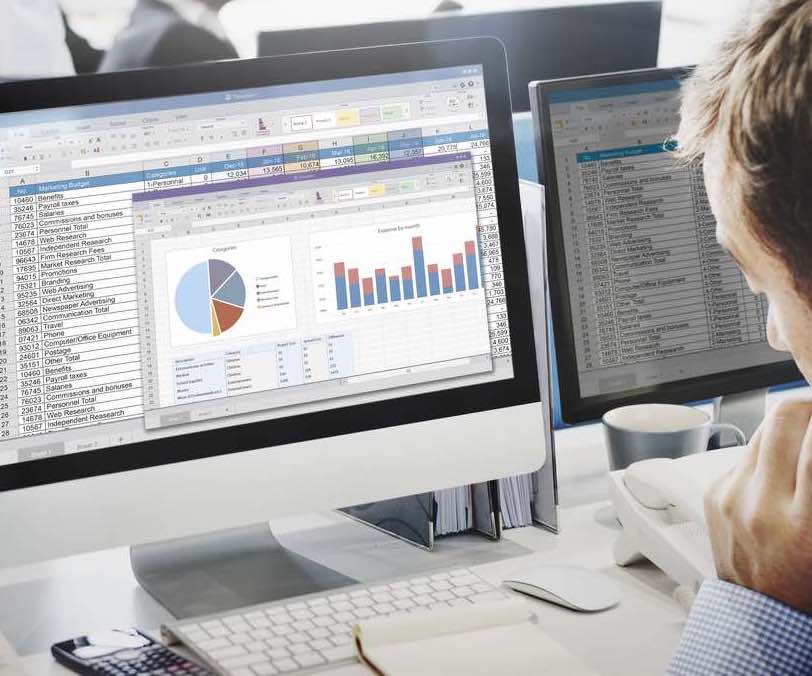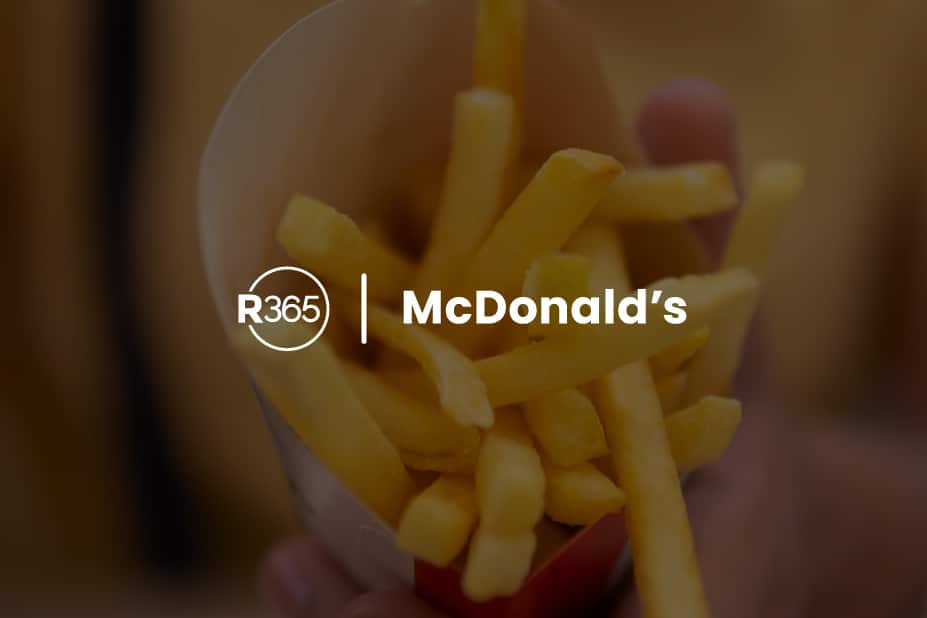Accurate restaurant sales forecasting can fuel more informed decision making in nearly every aspect of restaurant operations. Whether you’re wondering how much inventory to order next week, or how many employees should be scheduled over the holidays, a restaurant sales forecast, driven by POS data, can help you make better data-driven decisions.
The importance of your POS data
Your Point of Sale (POS) system used to be just a tool to process transactions. But modern POS systems contain more data than almost any other tool in your restaurant. This wealth of information can be leveraged to make quick, informed business decisions.
With a POS system that integrates seamlessly with your restaurant accounting software and restaurant operations software, you can automate tracking up-to-date sales and labor data. Removing manual entry and time-consuming input into spreadsheets not only saves your management team labor hours, but it also ensures that the data you’re using for forecasting is accurate.
Using POS data for accurate restaurant sales forecast
POS data is especially important in creating a restaurant sales forecast, one of the most critical restaurant operations tasks. An accurate sales forecast will help you determine and set the expectations for your restaurant’s expenses, profits, and future growth.
Sales forecasting projects future sales based on historical sales data, with some input from general economic trends and broad market analysis. Using historical sales level data, you can generally predict future sales with a certain degree of accuracy in comparable time periods.Accurate sales data is essential for an accurate restaurant sales forecast, and an integrated POS system ensures the most timely, up-to-date sales data. Instead of pulling out a calculator or spreadsheet, your POS system can automatically collect restaurant analytics needed for forecasting. A POS system, integrated with your restaurant inventory management software and your restaurant management system, can inform a deep dive into your past, present, and future sales.
Ways to use your POS data
When it comes to forecasting, there are three main ways POS data can be applied to aspects of restaurant operations.
1. Optimize inventory and stock levels
Because sales forecasting is based on similar historical time periods, knowing your likely sales can help inform critical decisions about inventory. For example, tracking the sales of the last eight Saturdays, assuming that there were no holidays as outliers, can give you a good idea of your sales on an upcoming Saturday.
More accurate sales estimates mean that you can better purchase inventory to match. A streamlined inventory minimizes food waste, as well as preventing under-ordering that leads to a poor customer experience. While there will always be a certain degree of unpredictability in sales, your restaurant sales forecast can give you an informed starting estimate for your inventory ordering.
2. Use POS data to improve customer insights
Holidays, traffic, special sporting events, and seasonal fluctuations in weather are all exceptions that can affect your business. However, with today’s POS systems, you can track sales alongside weather and other exceptional events. POS data can provide insight into customer behavior and how it affects your sales. Understanding sales fluctuations allows you to better capitalize on opportunities, ensuring adequate staffing and inventory for outlier periods.
3. Improve staff decisions
Because labor costs are one of the biggest expenses for your restaurant, you want to ensure you are making data-driven, informed decisions about labor. With sales forecasting driven by your POS data, sales estimates can be broken into levels that correlate with different labor scheduling. By projecting sales, you are best equipped to meet restaurant sales forecasts with an efficient, optimized level of labor.
Calculate your restaurant’s daily capacity
One common basic forecasting tool for restaurant owners is calculating your restaurant’s “daily capacity” to create a sales restaurant sales forecast baseline.
Say your restaurant has 15 four-tops. On a busy night, ideally, all 15 four-tops are full, and you are able to complete two turns for each table. You can project that you will be serving 120 main courses to your diners (4 guests x 15 tables x 2 turns = 120). If you know that your average ticket sale is $25, pulled from your POS system, that means you can project bringing in $3,000 (120 x $25 = $3,000). This is the high end of your restaurant’s daily capacity.
However, to get the full picture, you should also apply the same process to quieter evenings, where only half the tables may be full. With this information about your estimated highs and lows, you can establish a baseline of your best-case and worst-case scenarios for an evening’s sales.
Using sales data from your POS system to conduct accurate forecasts
Although calculating daily capacity used to be one of the only forecasting tools in a restaurant’s toolbelt, with modern software and systems, more accurate forecasting tools are available.
Integrated POS data can automatically pull from sales reports over time, labor costs, average check amounts, and total number of guests. In order to create an accurate forecast, you can compare your POS sales metrics from the same timeframe in the previous time period. Although there may be some anomalies, you should be able to spot general trends and start to recognize patterns.
External factors like the weather, or the level of competition in your area of town, can impact your sales year-over-year. Your sales forecasts will never be completely accurate, but your predictions can grow more accurate over time.
Why should you conduct a restaurant sales forecast?
A restaurant sales forecast, based on restaurant data analysis, is essential for smart decision-making about your business. Sales forecasting can help you control costs in two critical areas of your business: inventory and labor.
For inventory, forecasted customer traffic can ensure that you meet inventory demand. Accurate restaurant sales forecasts can prevent over-ordering, leading to waste and spoilage, and also help you ensure you don’t run out of customer favorites. For labor costs, sales forecasting can help you create schedules with the proper staffing levels and the right mix of skills. With streamlined labor hours, you can deliver the optimal guest experience at the lowest cost.
Finally, data-driven decisions about inventory, staffing, and future trends help you manage accurate profit expectations. The more information you have about what your future business growth looks like, the more informed decisions you can make about everything from equipment purchases to investor relationships. Sales projections are a crucial part of your business plan, in the present as well as in the future.
What your restaurant sales forecast should include
With knowledge of your expected sales for a certain time period, as well as your total costs, you should be able to calculate your “break-even” point. Your restaurant profit depends on sales exceeding the break-even point, where sales are greater than labor, food costs, and overhead. Especially for new or expanding businesses, an accurate restaurant sales forecast can inform critical metrics necessary to make decisions about your future.
While forecasting is a powerful tool, it is also important to not over-forecast sales. While every restaurant owner wants to see huge growth, overestimating your revenue may result in overspending or over-promising investors. Restaurant sales forecasts, while a powerful tool, should be based on conservative trends and projections.
Restaurant sales forecast sample
Restaurant sales forecasts can optimize your budget
Although you can’t perfectly predict the future, with tools for creating an accurate restaurant sales forecast, you can be prepared for whatever comes next.
If you would like to easily forecast your sales, as well as track your inventory and labor costs to gain insight into your operations, consider a comprehensive, restaurant management solution that incorporates restaurant accounting software, restaurant operations software, inventory management software, payroll + HR software, and scheduling software into an all-in-one, cloud-based platform that’s fully integrated with your POS system, as well as to your food and beverage vendors, and bank. With Restaurant365 you can save on food and labor costs by making adjustments in the moment, based on completely up-to-date information. Ask for a free demo of Restaurant365 today.



